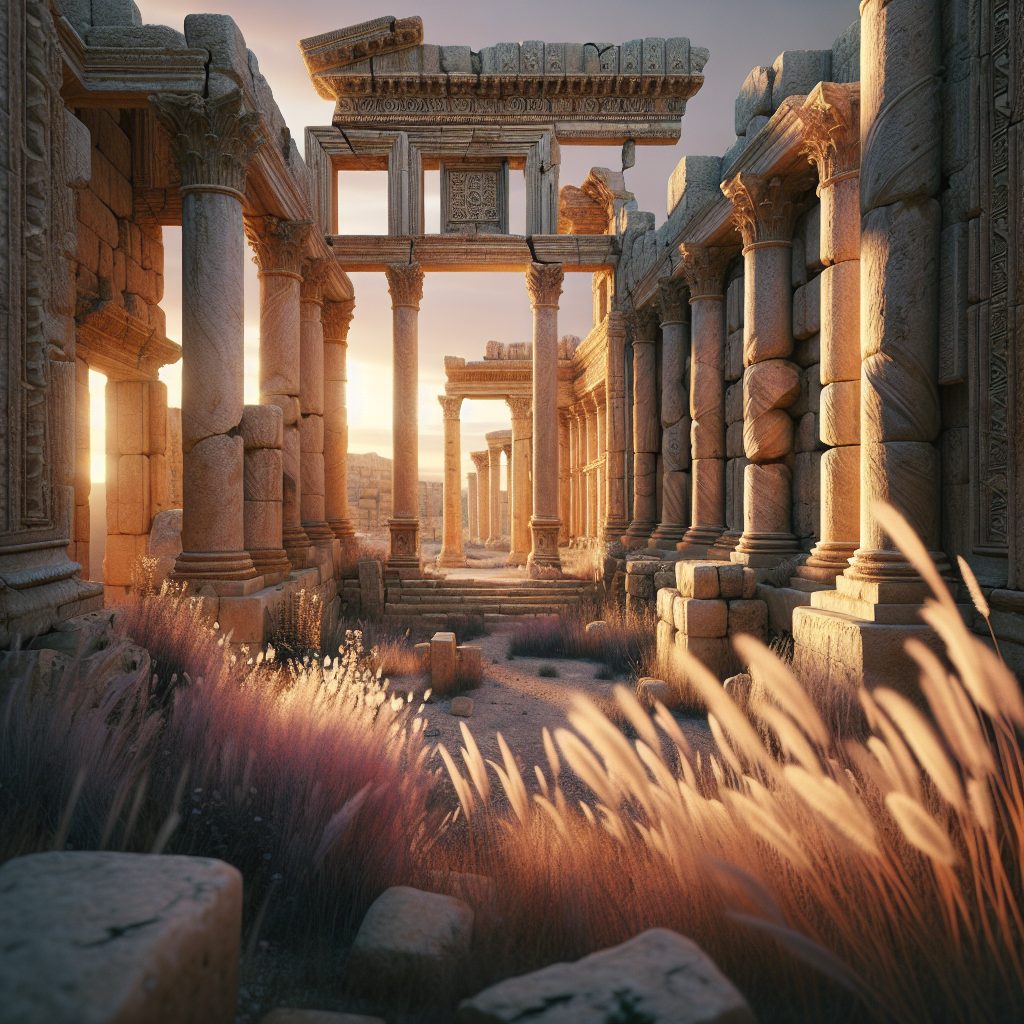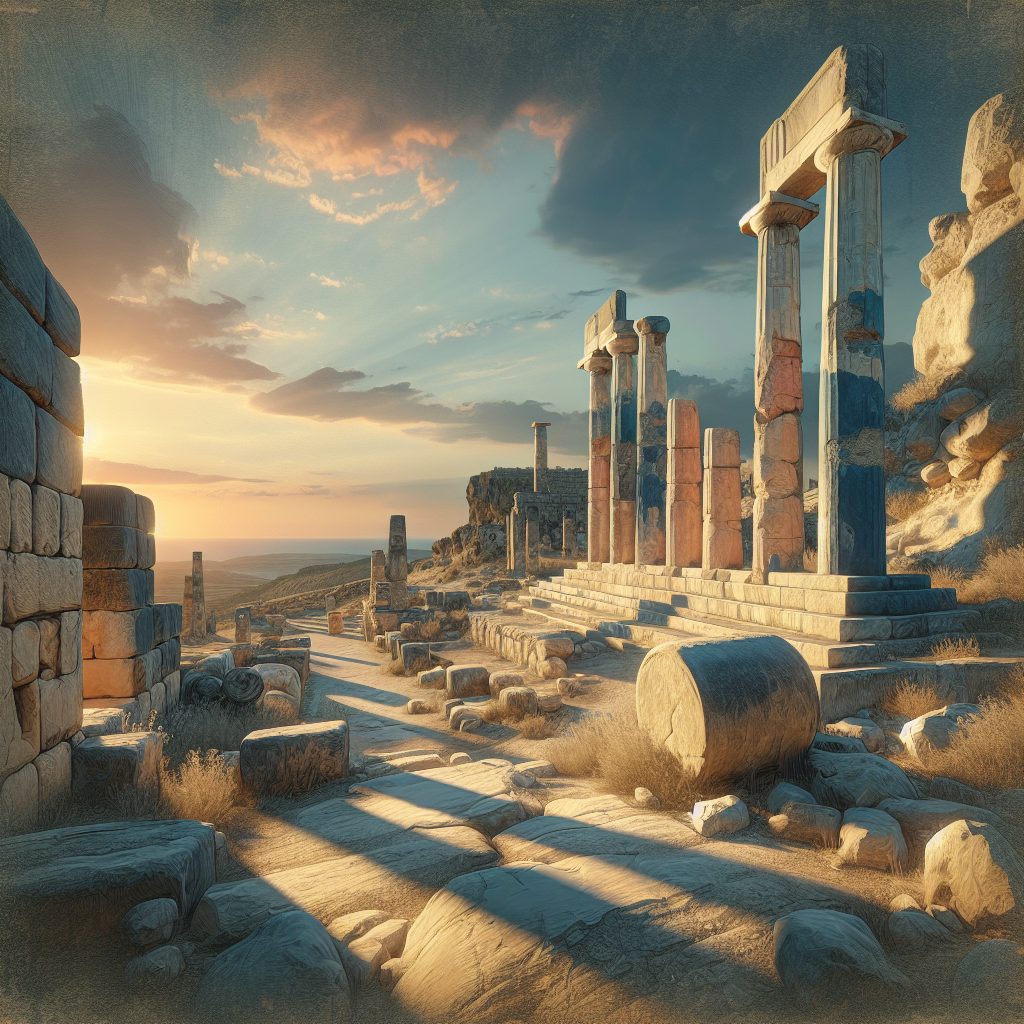Tharros ruins, located on the western coast of Sardinia, Italy, hold significant historical and cultural value. Dating back to the 8th century BC, Tharros was a prominent Phoenician city and later became a thriving Roman colony. The ruins offer a fascinating glimpse into the past, with their well-preserved structures and artifacts revealing insights into the lives of ancient civilizations.
One unique aspect of the Tharros ruins is their strategic location overlooking the Mediterranean Sea. This vantage point provided the city with a natural harbor, allowing it to flourish as a vital trading hub. The remains of the city’s defensive walls and watchtowers further highlight the significance of Tharros as a maritime stronghold.
Moving forward, this article will delve into the key takeaways of Tharros ruins. We will explore the rich history and architectural wonders of this ancient city, highlighting its importance in regional trade and the lasting impacts it had on subsequent civilizations. Additionally, we will discuss the ongoing efforts to preserve and protect this invaluable heritage site for future generations to appreciate. Stay tuned to discover the captivating story behind Tharros and gain a deeper understanding of its historical significance.
Key Takeaways
1. Tharros, an ancient city in Sardinia, Italy, holds significant archaeological ruins dating back to the Phoenician, Punic, and Roman periods.
2. The Tharros ruins provide insights into the rich history of the region, showcasing the cultural and economic exchanges that occurred over centuries.
3. The Punic-Roman residential district within the ruins is particularly noteworthy, with remains of private houses, paved streets, and public buildings offering a window into the daily life of the inhabitants.
4. Tharros also features a well-preserved Roman theater, believed to have been constructed in the 2nd century AD, which served as a venue for public performances and gatherings.
5. The strategic location of Tharros, along with its harbor, played a significant role in commercial activities, making it a vital trade hub in the ancient Mediterranean world.
Why are the Tharros ruins significant?
Historical Background
The Tharros ruins are an ancient archaeological site located on the western coast of Sardinia, Italy. Dating back to the 8th century BC, this Phoenician-Roman city offers valuable insights into the civilization and culture of the past. Exploring the historical background of Tharros sheds light on its significance.
Phoenician Influence
Tharros was built by the Phoenicians and served as a major trading hub in the Mediterranean. Its strategic location and maritime connections allowed for cultural interactions with various civilizations. The ruins offer evidence of Phoenician architectural style, pottery, and other artifacts, reflecting their lasting impact on the region.
Roman Occupation
During the Roman era, Tharros continued to thrive and expand. The ruins showcase Roman architectural elements, such as the Roman baths, villas, and mosaic floors. These remnants illustrate the integration of Roman culture into the existing Phoenician infrastructure, highlighting the significance of Tharros as a center of Roman influence.
Religious Significance
Tharros was home to several religious structures and sanctuaries, demonstrating its religious importance. The ruins include temples dedicated to Phoenician and Roman deities, providing valuable insight into ancient religious practices. The significance of Tharros lies in its role as a hub for spiritual and worship activities during that time.
Trade and Economy
Tharros played a crucial role in Mediterranean trade, serving as a pivotal point between Europe and Africa. The ruins reveal evidence of extensive trade networks and commercial activities, including warehouses, pottery kilns, and shipwrecks. Understanding the economic significance of Tharros contributes to our knowledge of ancient trade routes and economic systems.
Cultural Heritage
The Tharros ruins represent a significant cultural heritage site, preserving the memories and traditions of people who inhabited the area centuries ago. Excavations have unearthed various artifacts, including jewelry, statues, and everyday objects, enabling us to understand the daily lives and social dynamics of the past. The site’s cultural significance attracts archaeologists, historians, and tourists alike.
Preservation and Tourism Impact
The preservation of Tharros ruins has a direct impact on tourism in the region. Visitors from around the world come to explore the ancient site, contributing to the local economy. However, the influx of tourists also poses challenges in terms of conservation and management. Balancing tourism and preservation is crucial to maintaining the long-term significance of Tharros.
Tips for Visiting Tharros Ruins
- Wear comfortable shoes and bring sunscreen, as you will be walking and exposed to the sun for extended periods.
- Consider hiring a knowledgeable guide who can provide in-depth information about the ruins, enhancing your experience.
- Respect the site by not touching or removing any artifacts, as they are part of our shared heritage.
- Take photographs to capture the beauty and uniqueness of Tharros, but be mindful of any restrictions in certain areas.
- Support local initiatives and businesses that work towards the preservation and sustainable tourism of Tharros.
Frequently Asked Questions
1. What is the significance of Tharros ruins?
The Tharros ruins hold great historical significance as they are remnants of an ancient Phoenician city that dates back to the 8th century BC. These ruins provide valuable insights into the civilization, culture, and architecture of the past.
2. Where are the Tharros ruins located?
The Tharros ruins are located on the western coast of Sardinia, Italy, near the town of Cabras. They overlook the beautiful Mediterranean Sea, offering a stunning backdrop to the archaeological site.
3. Can visitors explore the Tharros ruins?
Yes, visitors can explore the Tharros ruins. The site is open to the public and allows visitors to walk amidst the ancient ruins, providing an immersive experience into the history of the Phoenician civilization.
4. What can I expect to see at the Tharros ruins?
At the Tharros ruins, you can expect to see the remains of the ancient city, including temples, houses, fortifications, and an amphitheater. There are also numerous artifacts and sculptures on display that have been excavated from the site.
5. Are there guided tours available at the Tharros ruins?
Yes, guided tours are available at the Tharros ruins. These tours are led by knowledgeable guides who provide in-depth information about the history and significance of the ruins, making the visit even more insightful.
6. Can I take photographs at the Tharros ruins?
Yes, photography is allowed at the Tharros ruins. It is the perfect opportunity to capture the beauty and historical essence of the site, but please be mindful not to cause any damage to the fragile ruins.
7. Are there any nearby amenities or facilities?
Yes, there are facilities such as restrooms, cafes, and souvenir shops located near the Tharros ruins. These amenities ensure that visitors have a comfortable and convenient experience while exploring the site.
8. How long does it take to visit the Tharros ruins?
The duration of your visit to the Tharros ruins depends on your pace and level of interest. On average, exploring the ruins and gaining an overview of the site can take around 1-2 hours, but you can spend more time if you wish to delve deeper into the history.
9. Is there an entrance fee for the Tharros ruins?
Yes, there is an entrance fee to visit the Tharros ruins. The fee helps in the maintenance and preservation of the site, ensuring its longevity for future generations to appreciate and learn from.
10. Can I access the Tharros ruins with mobility challenges?
The Tharros ruins are not easily accessible for individuals with mobility challenges. The site includes uneven terrain, stairs, and limited provisions for those requiring assistance. However, efforts are being made towards improving accessibility for all visitors.
Final Thoughts on Tharros Ruins Significance
The Tharros ruins offer a mesmerizing experience that takes you back in time, allowing you to witness the remnants of a flourishing ancient civilization. Exploring the ruins not only unveils the architectural marvels but also sheds light on the lives and achievements of the Phoenician people who once inhabited this coastal city.
By visiting the Tharros ruins, you embark on a journey of discovery, where each stone you encounter has a story to tell. The significance of preserving and learning from these ruins cannot be emphasized enough, as they provide a tangible connection to our ancestors and a rich source of knowledge about the past. So, immerse yourself in the wonders of Tharros and unravel the mysteries hidden within its ancient ruins.






